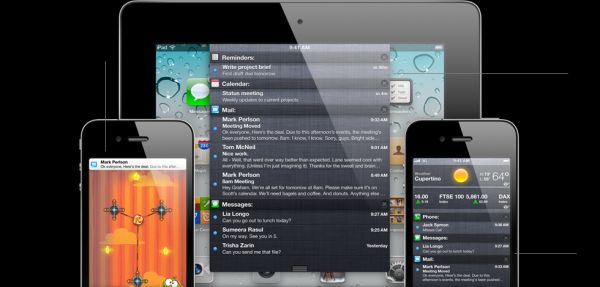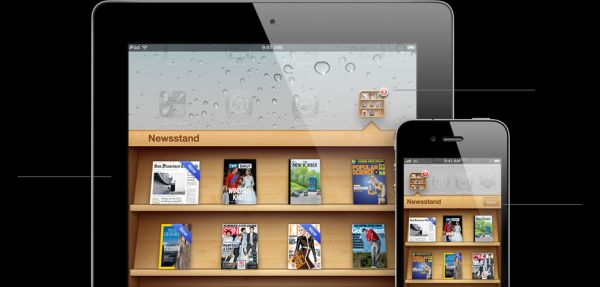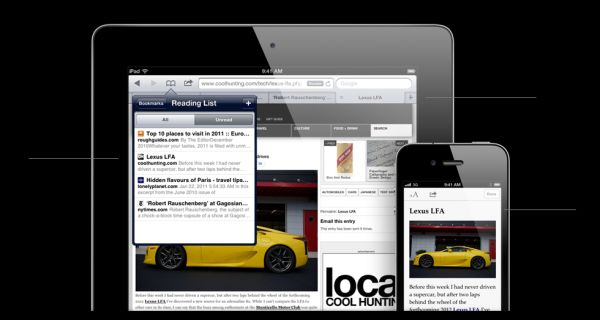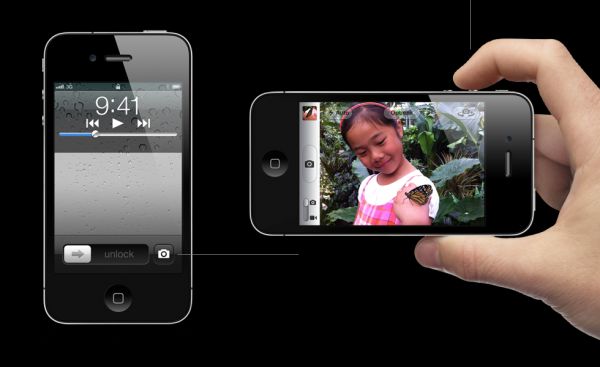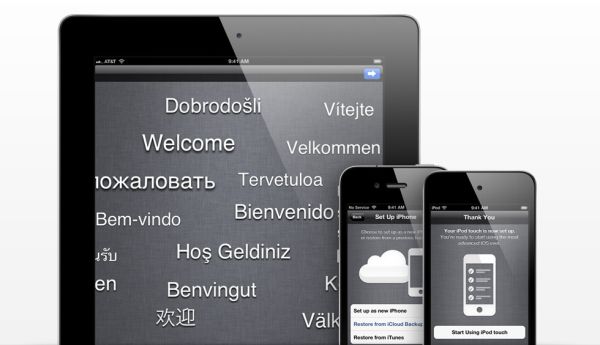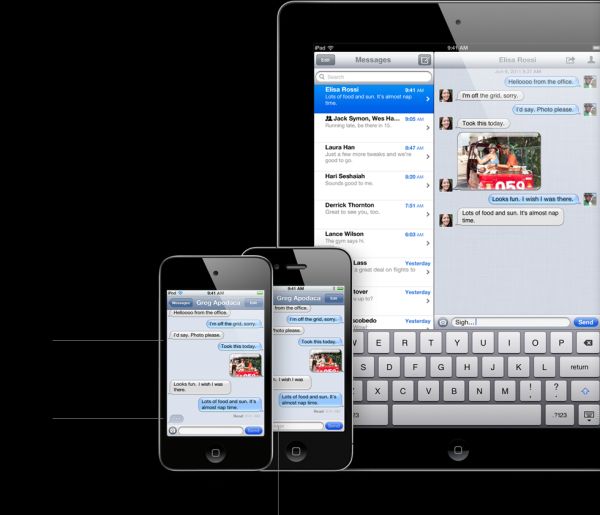
Original Link: https://www.anandtech.com/show/4427/wwdc-2011-ios-5
WWDC 2011: iOS 5
by Andrew Cunningham on June 6, 2011 4:19 PM ESTAfter giving us a look at OS X 10.7 Lion in its WWDC keynote today, Apple turned to what is seen as the more important of its OS platforms at the moment: iOS.
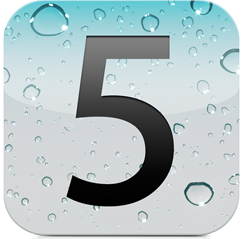
iOS 4 is still a perfectly usable smartphone and tablet operating system today, but advances made by both Google's Android and Microsoft's Windows Phone 7 have made it look a little long in the tooth. With iOS 5, Apple must both keep pace with its competitors advances and outmaneuver them in other areas.
First, let's talk availability and system requirements: iOS 5 will be available after Lion, at some unspecified date this fall. Apple didn't talk at all about a new iPhone onstage (meaning that, as the rumor mill has long suggested, we probably won't see a new iPhone this summer), so it's uncertain whether iOS 5 will show up along with revised hardware, or whether it will be used to help modernize the iPhone 4 and iPhone 3GS that Apple is currently selling.
That leads us to system requirements, where the news is happier: iOS 5 will support all the same devices that iOS 4.3 does, meaning that the iPhone 3GS, the iPhone 4 (both GSM and CDMA), the 3rd and 4th generation iPod Touch, the iPad and iPad 2, and the new Apple TV will all get iOS 5 when it comes out. Apple didn't say whether any major features would be left out for older devices - the iPhone 3G, as you may remember, didn't get multitasking or Home screen wallpaper support with the iOS 4 update, and it took a significant speed hit as well - but the speed (and, perhaps more importantly, the RAM) gap between the current crop of iOS devices and the previous generation isn't as wide as that between the 3GS and the 3G.
We'll most likely see some features excluded from older devices just because they're older devices (as we did when the Find My iPhone app was made available free of charge), but none of the iOS 5 features Apple talked about today seem like anything that older hardware will be technically unable to handle.
Now, on to the features: as with OS X, Apple is advertising a hyperbolic number of new features (200) in iOS 5, but they chose to focus on ten of them. Continue reading for a brief overview and analysis of those features.
This one's definitely in the "catching up with the competition" category: iOS notifications are currently super annoying. If you're in an app, they interrupt what you're doing. If you see a group of them on your home screen, that list disappears when you unlock the device. No more.
The Notification Center, invoked by a downward swipe from the top of the screen, groups all of your notifications from all of your apps together into one place, and lets you clear them away at your own pace. When you're in another app, new notifications appear at the top of the screen so that you know they're there, but you don't have to stop what you're doing to attend to them unless you want to. Clicking a notification will take you to the app that generated it.
Next up is Newsstand, which takes an iBooks-like approach to managing your digital newspaper and magazine subscriptions. It also increases the visibility of digital publications by grouping them together in one place away from the rest of the apps in the App Store. I'll be interested to see whether this increased visibility will result in higher sales for these publications, as those have been slow by most accounts. Newsstand also supports background downloads of your subscriptions, which can be read offline - no more having to open an app to trigger content updates.
Twitter integration is also coming to iOS 5 - this is going to be a love-it-or-don’t-care-about-it feature, depending on how addicted to Twitter you are. Twitter is now an integrated app that supports single sign-on at setup, and any app setup to take advantage of it can now post to Twitter without invoking the app itself. You can share pictures using Camera and Photos, you can tweet pages from Safari, videos from YouTube, and you can also store peoples’ Twitter information in your Contacts list. It's a pretty impressive list if you're a Twitter user, and while most platforms sport an official Twitter app at this point, none of them can boast such deep integration with the service.
Speaking of Safari, it's also getting a sizable face-lift thanks to its new, fully-tabbed interface (that, ironically, makes it look more like the Mac version of the browser). This brings it more in line with the Android Honeycomb browser, which impressed us when we reviewed it on the Motorola Xoom. Another Safari feature of note is the Reading List, which allows you to mark webpages to be read later. This is kept separate from your Bookmarks, which is a list of sites you want to access on a more permanent basis. Your Reading List will sync between iOS, Mac, and Windows copies of Safari associated with your Apple ID, meaning that pages you add on your iPhone while riding the train will be waiting for you when you get home and boot up your Mac.
Coming in at number five is Reminders, which allows you to store reminders on your phone and have the phone remind you to do them at certain times or when you arrive at a certain location. The former is something you can do just as easily using the built-in Calendar app, but the latter is sort of neat - you could, for example, have the phone set to remind you to get the mail when it sees that you've gotten home from work, which (like many technical innovations) is sort of cool and scary at the same time. Reminders will sync with calDAV/iCal and also Exchange.
The iPhone 4's camera hardware is one of the best in a smartphone today, but the same cannot necessarily be said of the Camera app. Once again, iOS 5 to the rescue: there's now a Camera button on the Lock screen that you can invoke by double-tapping the Home button, making it easier to capture spontaneous moments, and you can now take pictures with the volume up button as well as the button on the touchscreen. For security reasons, you'll still need a passcode to share it with anyone or see old photos. If you want, you can also invoke grid lines to help with your photo composition. Camera also gets some simple editing features, including redeye reduction, cropping, rotating, and some thing called one-click enhance, which will eliminate some of the guesswork for novices.
.jpg)
Mail also gets some minor enhancements, including rich text formatting, indentation control, dragging addresses between fields, flagging, and the ability to search the body of messages. On the iPad, iOS 5 also brings a Swipe to Inbox gesture, and enterprise customers gain support for S/MIME message encryption.
And here, at the unassuming number eight, Apple talked about the innovation that iOS needs the most: They're calling it PC Free, and as you might guess, it removes the need to tether iOS devices to a computer, finally putting the “Post-PC” in Post-PC era. Of course, Apple didn’t mention the fact that their competition has supported this feature, you know, for awhile.
When you first remove an iOS device from the box, a setup screen will now walk you through configuring it. Updates to iOS can now be delivered wirelessly, and it's worth noting that they’re also Delta updates, meaning that you’ll now download just the patch instead of a patched copy of the full OS. Apple is making a conscious effort to remove reasons to go back to the PC for anything, and I think that's the platform's (and, indeed, the form factor's) next frontier.
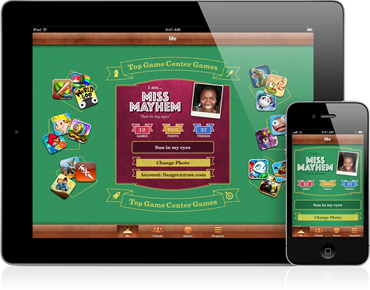
After the announcement of PC Free, Game Center seems like small potatoes, but we sometimes forget about the hurt that Apple is putting on Nintendo, Sony, and Microsoft with its line of accidental gaming devices. Since its introduction in iOS 4.1, Game Center has accumulated more than 50 million users.
As with Newsstand, Game Center offers games a place to be noticed apart from the rest of the App Store apps, which should help some with their visibility problems. Apple has also added photo sharing and native support for "turn-based" games like Words with Friends.
The last of Apple's ten iOS 5 features is a bit of a blast from the past. Using the same basic layout as the iPhone Messages app, iMessage enables the sending of text, photo, and video messages between any device running iOS 5. You can also see whether the person on the other end is typing (takes you back to your AIM 6.0 days, doesn't it?), and get a read receipt that tells you whether the person on the other end has gotten your message. It will push messages to all of your iOS 5 devices, it support secure message encryption, and it works over 3G and Wi-fi.
Conclusions
There were plenty of other, smaller features that were brought up amidst the ten that were focused on, and they're all welcome additions to the OS: A built-in, OS-wide dictionary allows the checking of any definition from any app. A new split keyboard can be invoked to reduce hand strain for those who type with their thumbs. Devices can now sync wirelessly with iTunes. It's all stuff that makes iOS better than it is today, and it all goes a long way toward Apple's obvious goal for iOS 5: To replace your PC or Mac.
Apple (and every tech pundit under the sun, really) has been quick to declare this a "post-PC era" in which PCs become a less important part of our digital lives, but this message has been muddied by the fact that every iOS device up until now has needed a standard PC or Mac to get started. Even if you downloaded every song or app afterward to the device without syncing to iTunes, you'd still need to dig out the USB cable to perform software updates or backups, and iOS 5 finally removes that requirement.
I know I'm not quite there yet, personally, but there are many users who don't need anything beyond what an iPad offers - the ability to watch videos, listen to music, check email and browse the Web. That's just about everything you can feasibly get done on a $500 PC these days, and the iPad offers a way forward that requires less maintenance, space on a desk, electricity, and general fuss than does a traditional PC. I'm excited about iOS 5 mostly because it seems to signal the end of the beta test for the "post-PC era" - we know that smartphones and tablets are great supplements to PCs and Macs, now let's see how they do as replacements.

